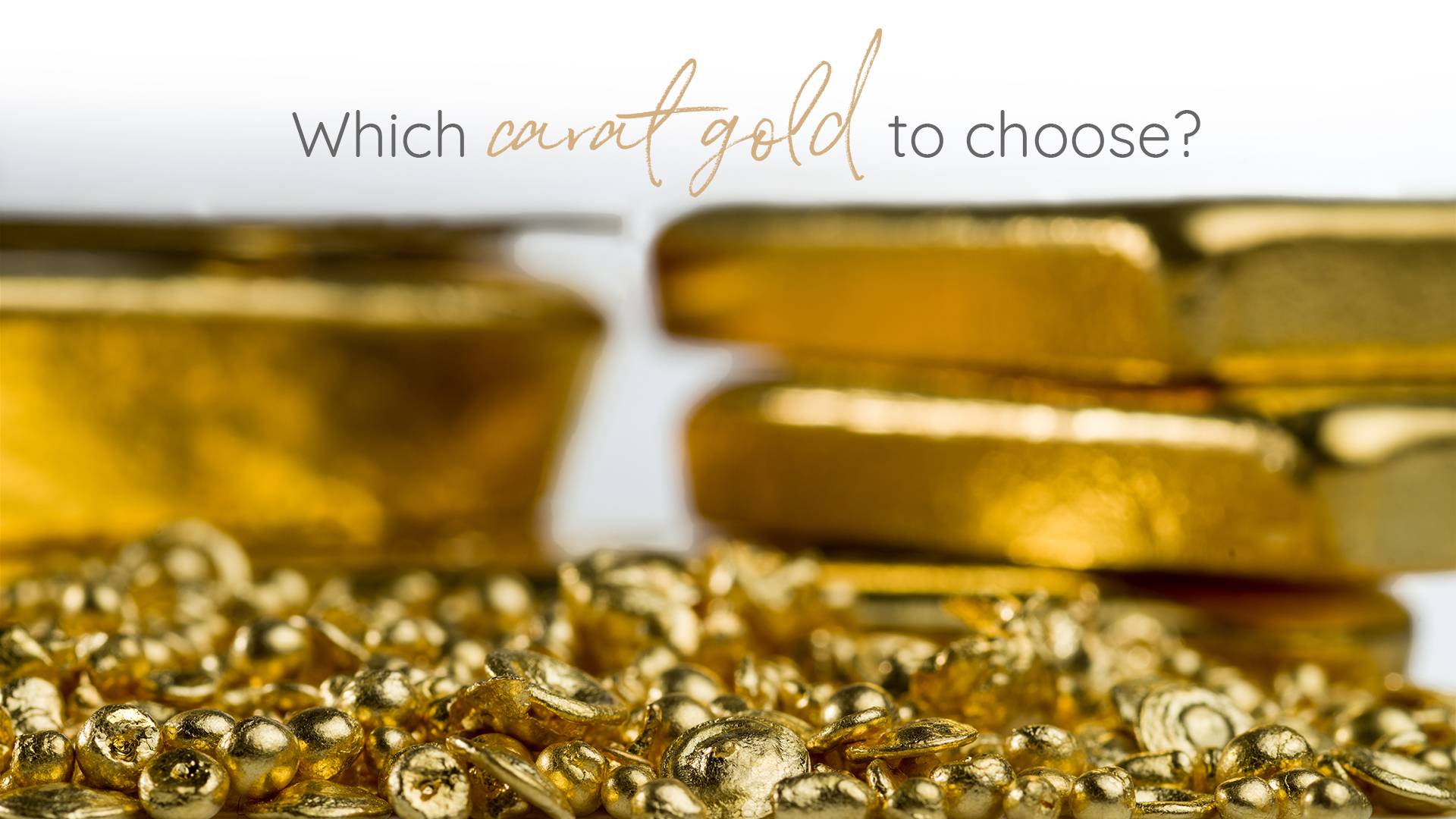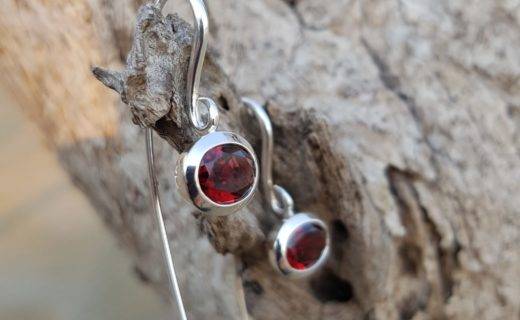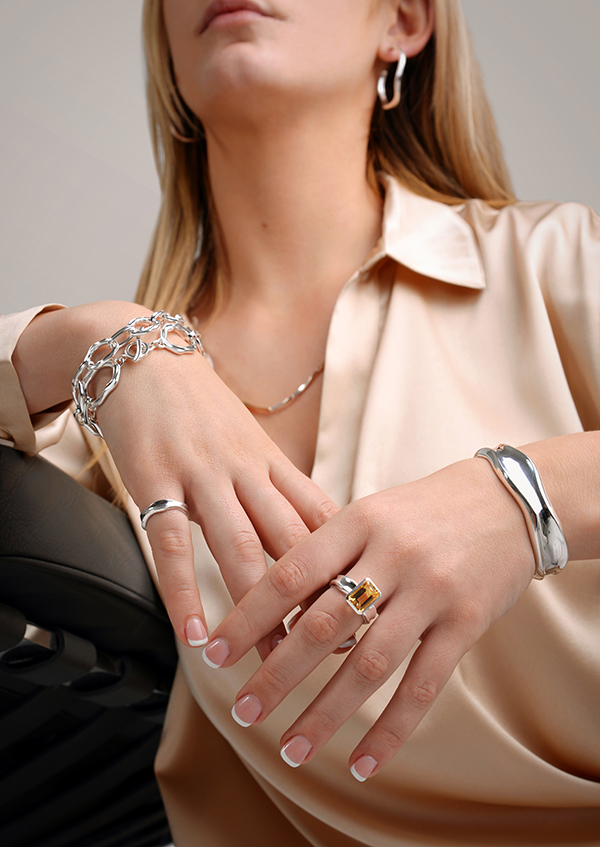The facts you need to know to decide which carat gold you should choose.
Gold is an amazing metal and is universally loved for its colour and workability and intrinsic value.
When it comes to making jewellery, pure gold, also called 24 carat gold, is not ideal as it’s quite soft. It’s also quite heavy/dense, and one cubic centimetre weighs 19.3 grams (it’s specific gravity).
To make pure gold more suitable for jewellery like chains, wedding and engagement rings, it must be alloyed (mixed) with other metals such as copper and silver. This changes the hardness and durability of gold as well as the colour and the weight of the finished pieces of jewellery.
Gold differences explained
22 carat gold is an alloy of gold and other metals where 91.67% is pure gold. This metal has a rich colour though is still too soft for rings and the majority of jewellery.
Jewellery will be hallmarked (stamped) 916, 22ct or 22K.
 18 carat gold is probably the most widely used gold. It is an alloy that has 75% pure gold mixed with other metals (silver and copper) to obtain a rich yellow colour. It is very durable, amazing to work with and has a great weight and feel. In regards to weight, one cubic centimetre of 18ct yellow gold will weigh 15.5grams (its specific gravity), which explains its higher value and cost. An engagement ring made from 18ct gold will weigh 26% more than the same 9ct design. It’s perfect for bracelets, engagement rings, wedding rings, necklaces and earrings. In my opinion, it is definitely worth choosing 18ct gold for your jewellery.
18 carat gold is probably the most widely used gold. It is an alloy that has 75% pure gold mixed with other metals (silver and copper) to obtain a rich yellow colour. It is very durable, amazing to work with and has a great weight and feel. In regards to weight, one cubic centimetre of 18ct yellow gold will weigh 15.5grams (its specific gravity), which explains its higher value and cost. An engagement ring made from 18ct gold will weigh 26% more than the same 9ct design. It’s perfect for bracelets, engagement rings, wedding rings, necklaces and earrings. In my opinion, it is definitely worth choosing 18ct gold for your jewellery.
Jewellery will be hallmarked (stamped) with 750, 18ct or 18K.
 14 carat gold is widely used in Europe, and is well known as an acceptable compromise of quality and cost. 14 carat gold contains 58.5% pure gold and is mixed with copper, zinc and silver to obtain the appropriate colour tones. More copper for a more pink tone and more silver for a subtle yellow colour. As the metal contains 41.5% other metals it is more prone to oxidation and slight colour change, so your jewellery will need to be cleaned more often. The weight of one cubic centimetre is 13.5 grams (it’s specific gravity), weighing 13% less than 18ct gold, which explains it’s lower cost.
14 carat gold is widely used in Europe, and is well known as an acceptable compromise of quality and cost. 14 carat gold contains 58.5% pure gold and is mixed with copper, zinc and silver to obtain the appropriate colour tones. More copper for a more pink tone and more silver for a subtle yellow colour. As the metal contains 41.5% other metals it is more prone to oxidation and slight colour change, so your jewellery will need to be cleaned more often. The weight of one cubic centimetre is 13.5 grams (it’s specific gravity), weighing 13% less than 18ct gold, which explains it’s lower cost.
Jewellery will be hallmarked (stamped) 585, 14ct or 14K
9 carat gold is a popular budget choice based mainly on the lower cost of this alloy. 9 carat gold contains 37.5% pure gold and the remainder is usually made up of copper and silver. It is durable, though prone to oxidation, discolouration and more visible joins when soldered. One cubic centimetre weighs approximately 11.4 grams (its specific gravity), which means a wedding ring made from 9ct gold will weigh 26% less than an 18ct gold wedding ring of the same design. This explains the lower cost and value of 9ct gold jewellery.
Jewellery will be hallmarked (stamped) 375, 9ct or 9K.
The colours of gold
When you mix gold with other metals (alloying) you can obtain an extremely broad colour palette. White gold and rose or pink gold are the most common and these can have a myriad of different tones depending on the mix of other metals.
White gold is pure gold mixed with either palladium, silver and nickel (depending on the laws of the country in regards to nickel allergies), to obtain a white or light grey colour. Jewellery made from white gold is usually electro-plated with rhodium (a very precious, expensive metal) to create a very white, hard surface.
Rose or pink gold, is created by mixing more copper than silver into the gold alloy, resulting in warm reddish tone that is popular depending on the style of the jewellery or the current trend. Rose gold will oxidise more easily and joins are quite visible. It is also harder to work with than yellow gold.
Whichever metal you choose, keep in mind that jewellery is something that you will love and wear for a lifetime, because a well made piece of jewellery will last at least that long. That’s something to consider when deciding.







